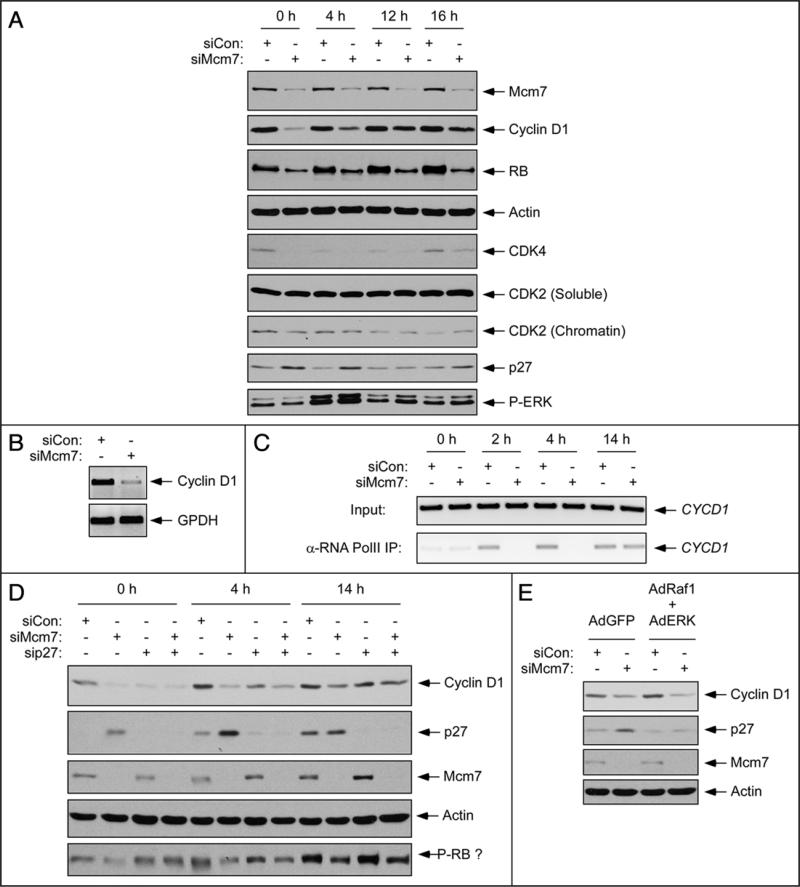Figure 2.
Mcm7 depletion inhibits cyclin D1 expression independently of p27. (A) Quiescent hTERT-expressing HDF were transfected with siMcm7 or siCon oligonucleotides, then stimulated to enter the cell cycle. After 0 hr, 4 hr, 12 hr and 16 hr of serum stimulation chromatin and soluble fractions were prepared and analyzed for expression of various proteins (as indicated) using SDS-PAGE and immunoblotting. (B) Quiescent hTERT-expressing HDF were transfected with siMcm7 or siCon oligonucleotides, then stimulated to enter the cell cycle. After 4 hr, total RNA was extracted from the cells and analyzed for cyclin D1 and GPDH mRNAs using RT-PCR as described under ‘Materials and Methods’. (C) For ChIP analyses, control and Mcm7-depleted cells were synchronized as described in (A). At various times after stimulating cell cycle entry, chromatin fractions were harvested and immunoprecipitated using α-RNA Pol II antibody. Total chromatin (‘Input’) and α-RNA-Pol II immune complexes were analyzed by PCR using primers designed to amplify a fragment of the CYCD1 promoter. (D) Quiescent hTERT-expressing HDF were transfected with siCon, siMcm7 and sip27 individually or in combination. Transfected cells were stimulated with serum and after 0 hr, 4 hr and 14 hr soluble fractions were prepared and analyzed by SDS-PAGE and immunoblotting for expression of various proteins as indicated. (E) Quiescent hTERT-expressing HDF were transfected with siCon or siMcm7 for 24 hr. Transfected cells were then infected with AdGFP or AdRaf1 + AdERK as indicated. Cells were stimulated with serum and 4 hr after release from quiescence soluble fractions were prepared and analyzed by SDS-PAGE and immunoblotting as indicated.

